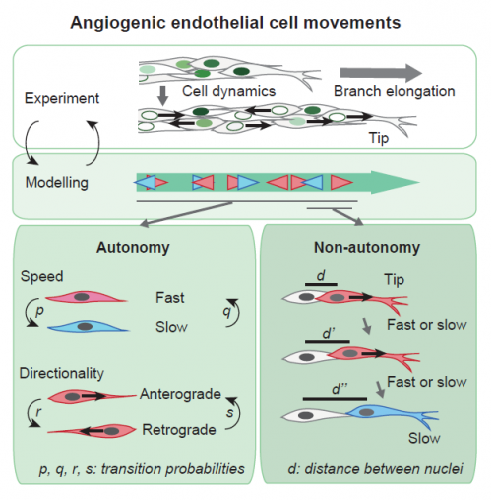Koichi Nishiyama
Paper Information
Sugihara K∗, Nishiyama K∗,∗∗, Fukuhara S, Uemura A, Arima S, Kobayashi R, Köhn-Luque A, Mochizuki N, Suda T, Ogawa H and Kurihara H
Autonomy and non-autonomy of angiogenic cell movements revealed by experiment-driven mathematical modeling. Cell Rep. 2015 Dec 1; 13(9):1-14.
* first authors, **corresponding author
Highlights
- A mathematical model was developed to simulate angiogenic multi-EC movements
- Cell-autonomic processes sufficiently illustrate core features of morphogenetic ECs
- A regulatory mechanism by the follower EC, which restricts tip EC motility
Abstract
Angiogenesis is a multicellular phenomenon driven by morphogenetic cell movements. We recently reported morphogenetic vascular endothelial cell (EC) behaviors to be dynamic and complex. However, the principal mechanisms orchestrating individual EC movements in angiogenic morphogenesis remain largely unknown. Herein, we present an experiment-driven mathematical model, which enable us to systematically dissect cellular mechanisms in branch elongation. We found cell-autonomous and coordinated actions to govern these multicellular behaviors, wherein a cell-autonomous process sufficiently illustrated essential features of the morphogenetic EC dynamics at both the single cell and the cell population level. Through model refining and experimental verification, we further identified a coordinated mode of tip EC behaviors regulated via a spatial relationship between tip and follower ECs, which facilitates the forward motility of tip ECs. These findings provide insights enhancing our mechanistic understanding of not only angiogenic morphogenesis but also other types of multicellular phenomenon.

